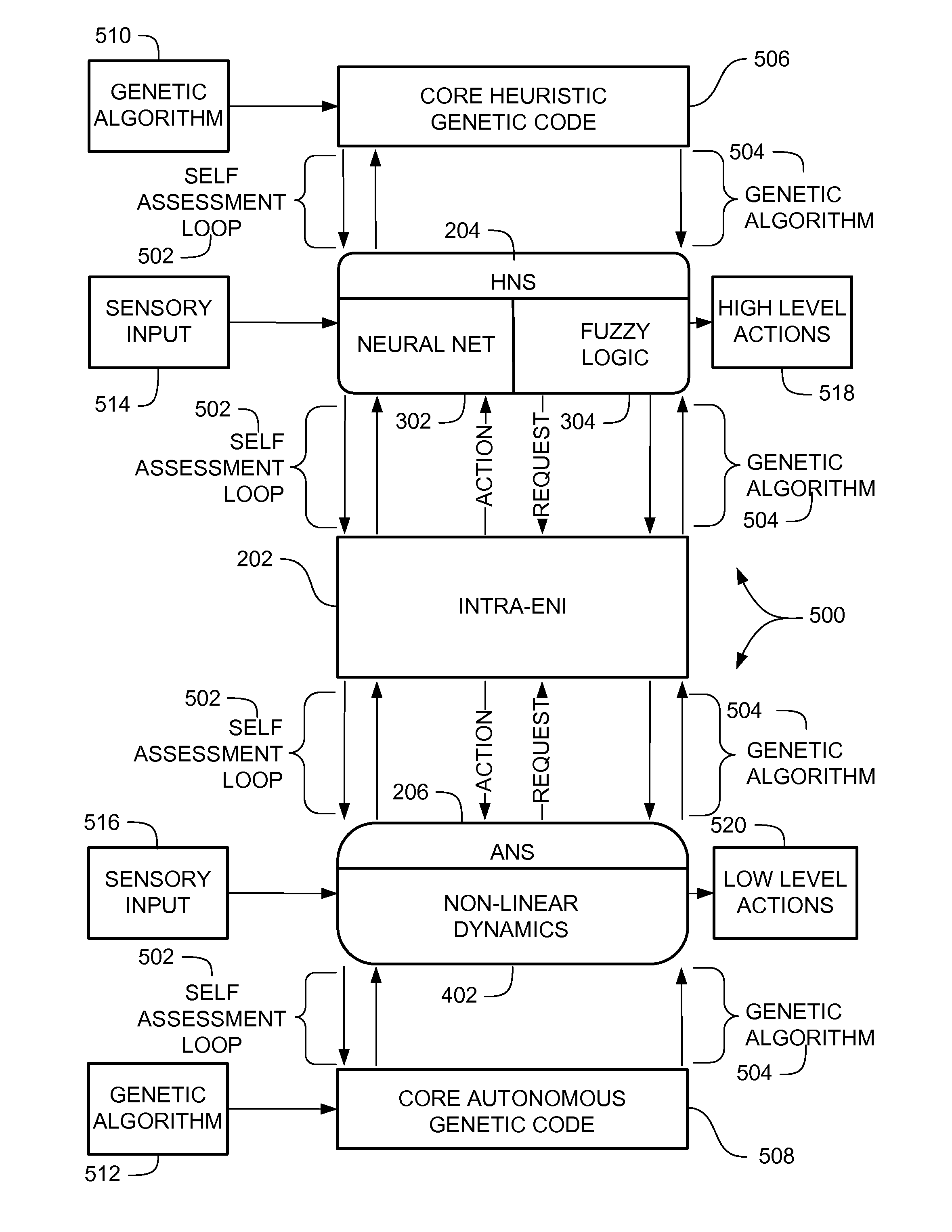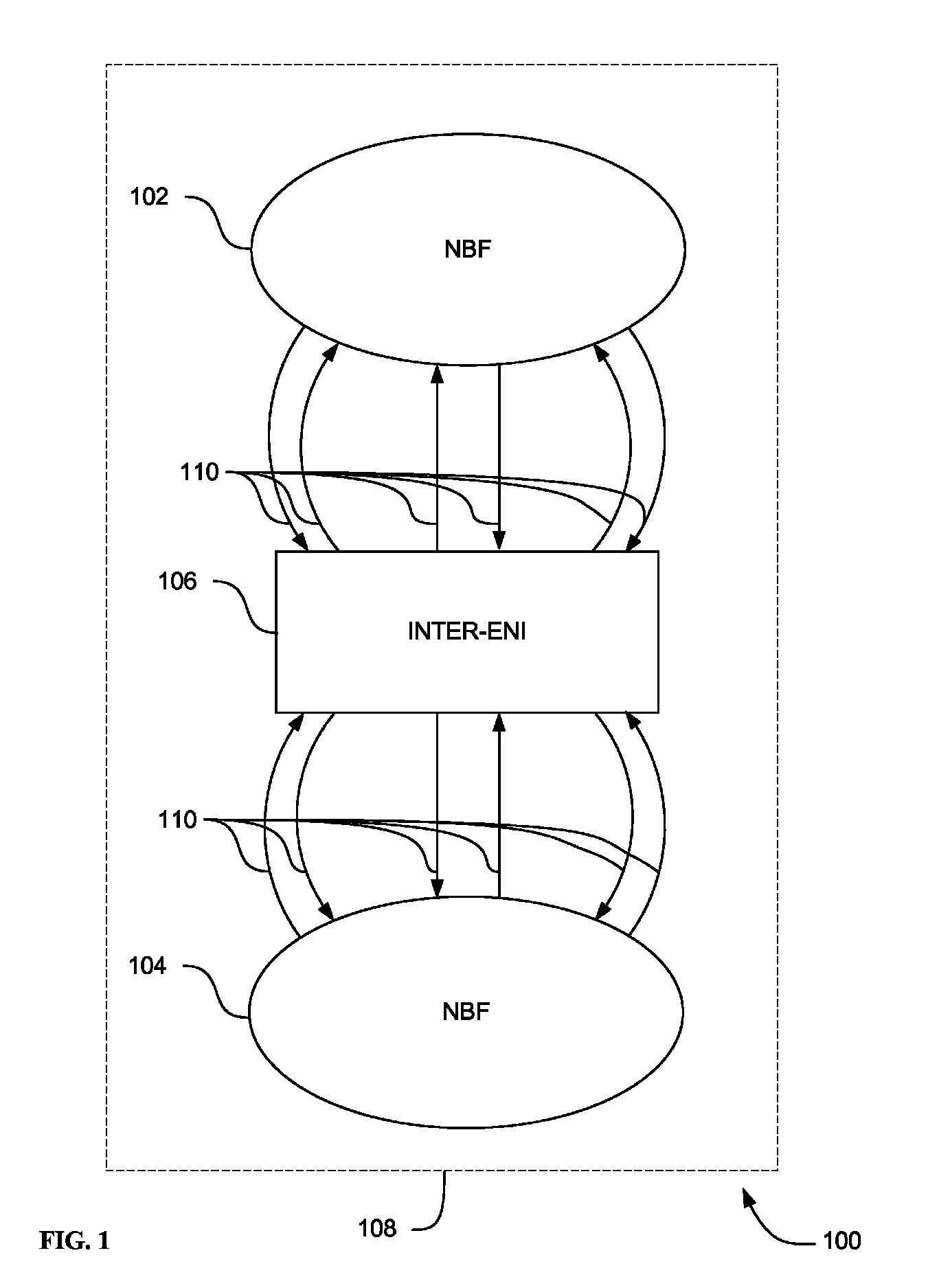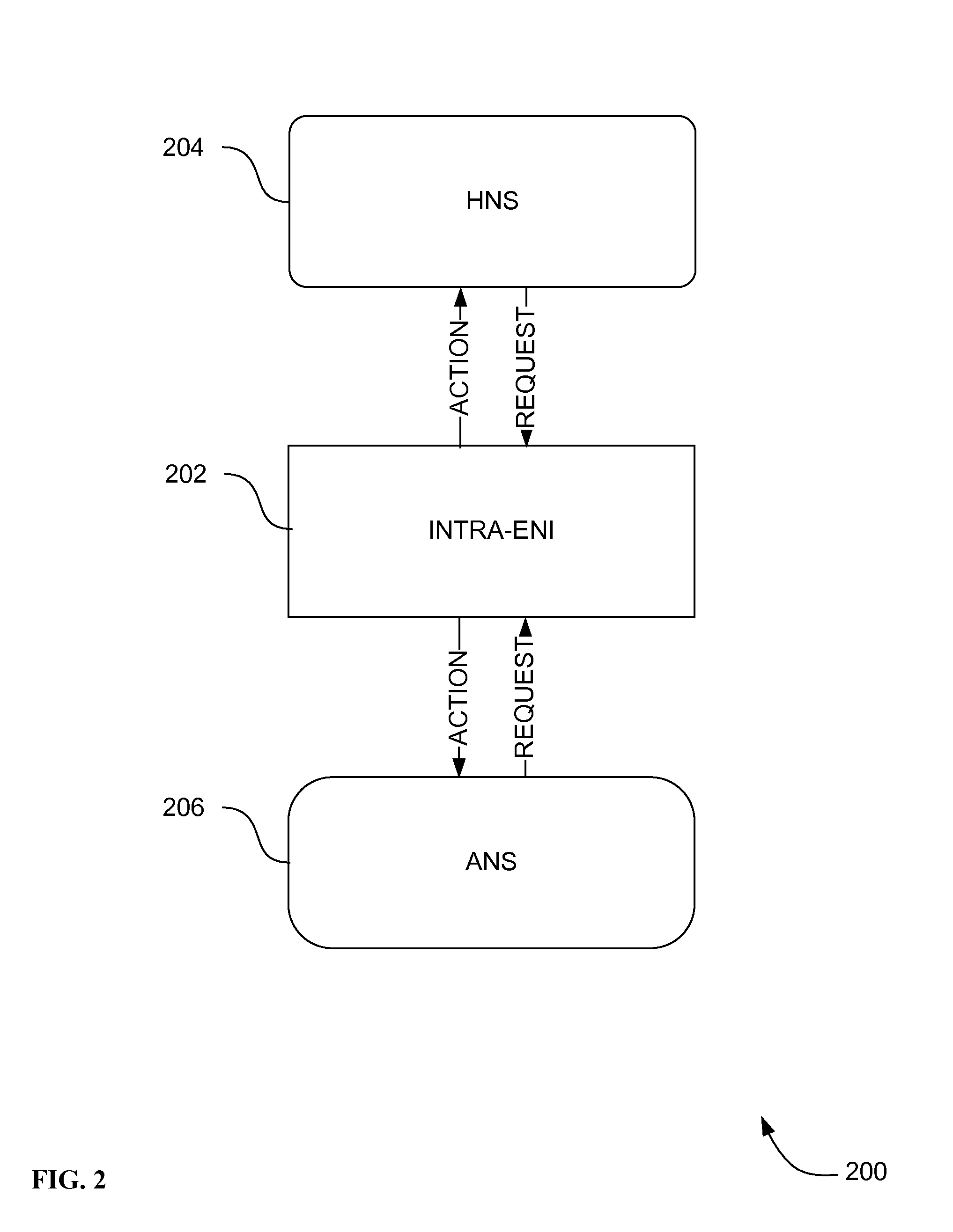Autonomic and apoptotic, aeronautical and aerospace systems, and controlling scientific data generated therefrom
a technology of aeronautical and aerospace systems and scientific data, applied in the field of artificial intelligence, can solve the problem that the self-* function no longer exists, and achieve the effect of facilitating collective interaction between autonomous entities
- Summary
- Abstract
- Description
- Claims
- Application Information
AI Technical Summary
Benefits of technology
Problems solved by technology
Method used
Image
Examples
Embodiment Construction
[0058]In the following detailed description, reference is made to the accompanying drawings that form a part hereof, and in which is shown by way of illustration specific embodiments that can be practiced. These embodiments are described in sufficient detail to enable those skilled in the art to practice the embodiments, and it is to be understood that other embodiments can be utilized and that logical, mechanical, electrical and other changes can be performed without departing from the scope of the embodiments. The following detailed description is, therefore, not to be taken in a limiting sense.
[0059]The present teachings can employ a self-managing computer system that has been developed based on autonomic computing. The autonomic computing system is analogous to the biological nervous system, which automatically maintains homeostasis (metabolic equilibrium) and controls responsiveness to external stimuli. An autonomic device, system, and method are provided that include a self-ma...
PUM
 Login to View More
Login to View More Abstract
Description
Claims
Application Information
 Login to View More
Login to View More - R&D
- Intellectual Property
- Life Sciences
- Materials
- Tech Scout
- Unparalleled Data Quality
- Higher Quality Content
- 60% Fewer Hallucinations
Browse by: Latest US Patents, China's latest patents, Technical Efficacy Thesaurus, Application Domain, Technology Topic, Popular Technical Reports.
© 2025 PatSnap. All rights reserved.Legal|Privacy policy|Modern Slavery Act Transparency Statement|Sitemap|About US| Contact US: help@patsnap.com



